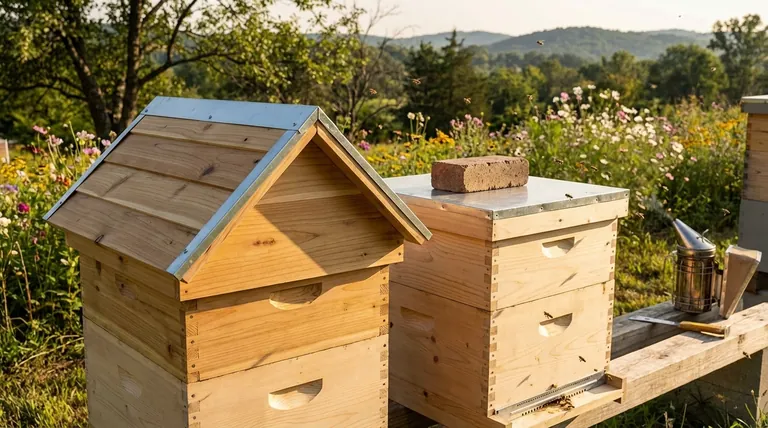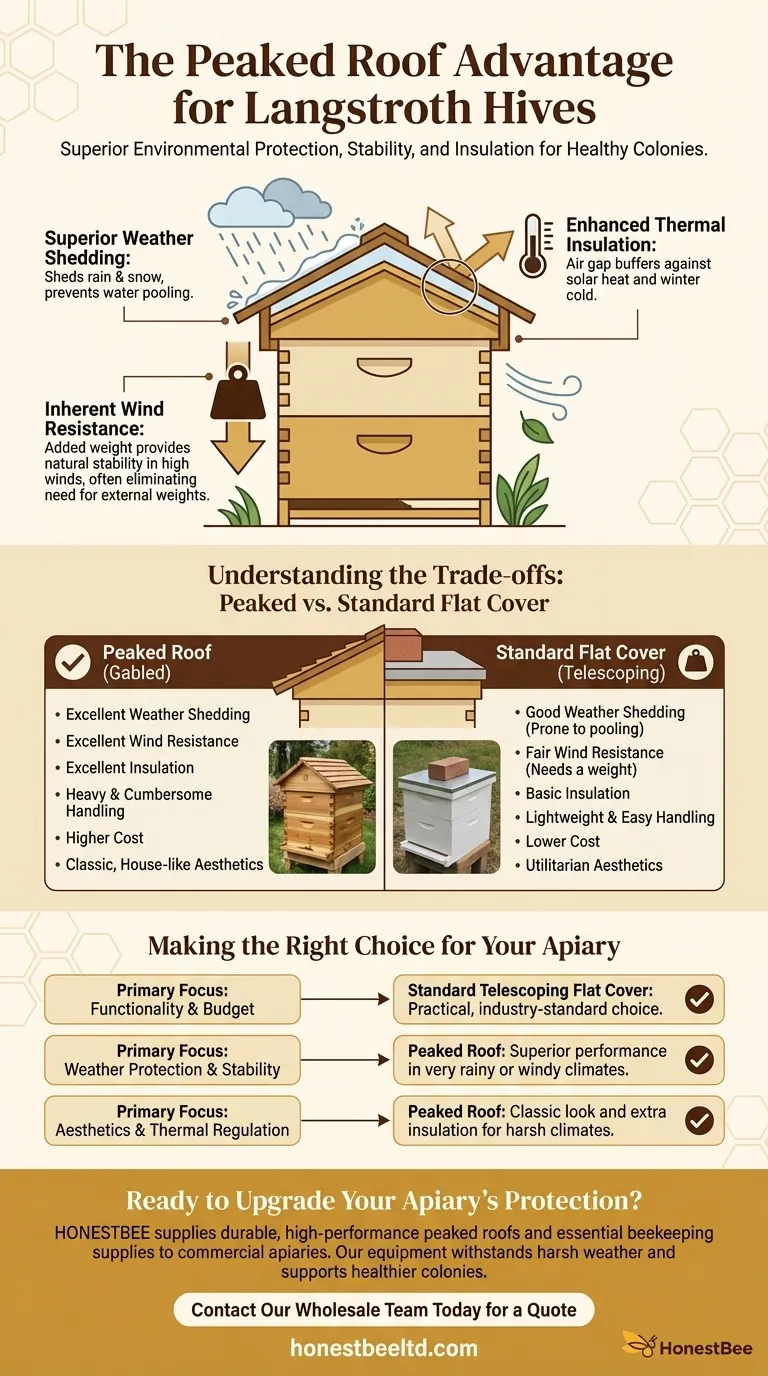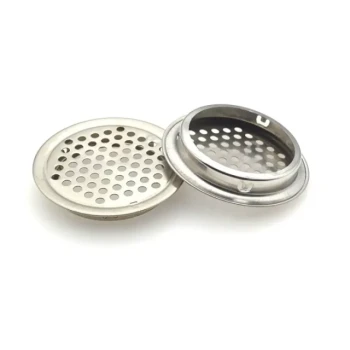A peaked roof on a Langstroth hive is an upgrade designed for superior environmental protection and stability. Its primary features are its pitched design that sheds rain, its inherent weight for wind resistance, the added insulation from the air gap it creates, and its distinct aesthetic appeal compared to a standard flat cover.
Choosing a hive roof is a decision between the standard, lightweight flat cover and the more robust peaked roof. While the flat cover is utilitarian, the peaked roof offers enhanced protection against weather at the cost of being heavier and often more expensive.

The Functional Advantages of a Peaked Roof
A peaked roof, sometimes called a gabled roof, is more than a cosmetic choice. Each design feature directly addresses common challenges faced by a honey bee colony.
Superior Weather Shedding
The most obvious benefit is its ability to handle precipitation. The angled design ensures that rain and snow slide off immediately, preventing water from pooling on top of the hive.
This is critical for preventing moisture from seeping into the hive's inner components, which can lead to wood rot and create a damp, unhealthy environment for the bees.
Inherent Wind Resistance
Peaked roofs are typically constructed with more material, making them significantly heavier than standard flat covers.
This added weight provides natural stability in high winds. It often eliminates the need to place a brick or strap over the hive, which is a common practice for beekeepers using lighter, standard-issue flat covers.
Enhanced Thermal Insulation
A peaked roof creates a pocket of air between the roof itself and the hive's inner cover. This trapped air acts as an excellent insulator.
During the heat of summer, it helps buffer the colony from direct solar radiation. In the winter, it provides an additional layer of protection against the cold, helping the bees maintain their crucial cluster temperature with less effort.
Understanding the Trade-offs
While a peaked roof offers clear benefits, it's essential to compare it to the standard alternative—the telescoping flat cover—to understand the full picture.
Peaked Roof: Weight and Handling
The same weight that makes a peaked roof stable in the wind also makes it more cumbersome to handle. Removing a heavy, angled roof during a hive inspection can be more awkward than lifting a simple flat cover.
Standard Flat Cover: The Utilitarian Choice
The traditional telescoping flat cover is the most common roof for a reason. It is functional, relatively lightweight, and less expensive. Its design allows it to "telescope" over the top hive body for a snug fit.
Its primary weakness is its light weight, making it susceptible to being displaced by strong winds. As noted, this is easily remedied with a heavy object.
Cost and Aesthetics
There is no question that a peaked roof provides a "beautiful finishing touch," giving the hive a classic, miniature house-like appearance. This aesthetic upgrade and the more complex construction almost always come at a higher price point.
Making the Right Choice for Your Apiary
Your decision should be based on your climate, management style, and budget.
- If your primary focus is functionality and budget: The standard telescoping flat cover is the practical, industry-standard choice that performs its job well.
- If your primary focus is weather protection and stability: The peaked roof offers superior performance in very rainy or windy climates, reducing worry and the need for extra weights.
- If your primary focus is aesthetics and thermal regulation: The peaked roof provides a classic look and an extra layer of insulation against temperature extremes, which can be beneficial in harsh climates.
Ultimately, selecting the right roof is about matching the equipment to your specific climate, beekeeping style, and goals.
Summary Table:
| Feature | Peaked Roof | Standard Flat Cover |
|---|---|---|
| Weather Shedding | Excellent (pitched design) | Good (prone to pooling) |
| Wind Resistance | Excellent (inherently heavy) | Fair (often needs a weight) |
| Insulation | Excellent (creates an air gap) | Basic |
| Weight & Handling | Heavy & Cumbersome | Lightweight & Easy |
| Cost | Higher | Lower |
| Aesthetics | Classic, House-like | Utilitarian |
Ready to upgrade your apiary's protection?
HONESTBEE supplies durable, high-performance peaked roofs and other essential beekeeping supplies to commercial apiaries and distributors. Our equipment is designed to withstand harsh weather, reduce maintenance, and support healthier, more productive colonies.
Contact our wholesale team today to discuss your needs and get a quote.
Visual Guide

Related Products
- Telescopic Beehive Outer Cover Lid Roof with Galvanised Sheeting for Langstroth Hive and Beehive Outer Cover
- Long Langstroth Style Horizontal Top Bar Hive for Wholesale
- Langstroth Bee Hives Bee Keeping Box for Beginners Beekeeping
- Professional Insulated Winter Hive Wrap for Beekeeping
- Inner Beehive Cover for Beekeeping Bee Hive Inner Cover
People Also Ask
- What is the purpose of a garden hive lid in beekeeping? Essential Protection for Your Colony's Health
- Can bees enter from both sides of the outer cover? Master Seasonal Hive Management
- What are the two primary lid styles for Langstroth style beehives? Choose the Right Protection for Your Hives
- What is the function of the top cover in a Langstroth hive? Master Hive Protection & Climate Control
- How do you install the Langstroth hive roof? A Step-by-Step Guide for a Healthy Colony



















